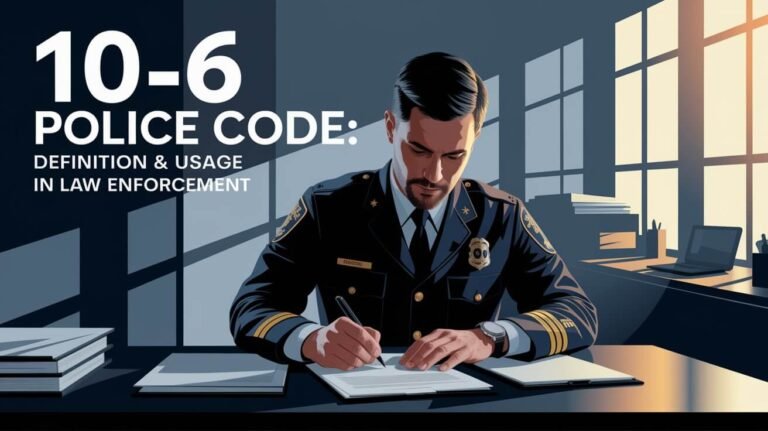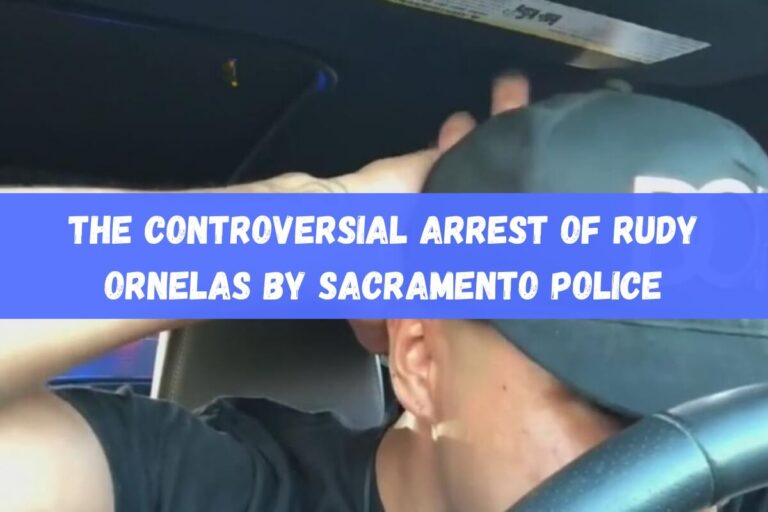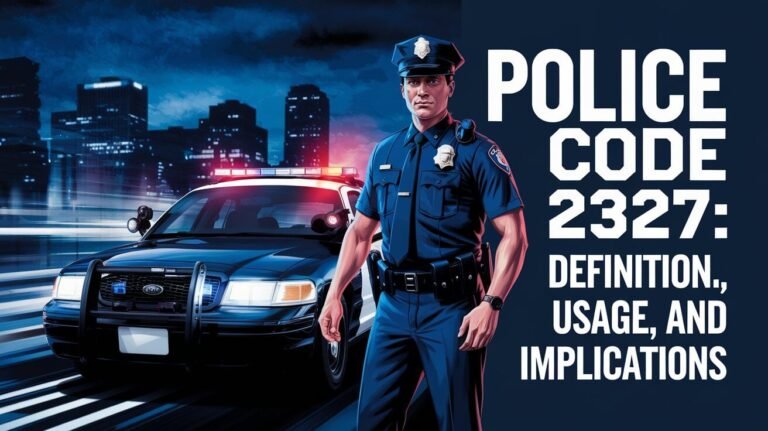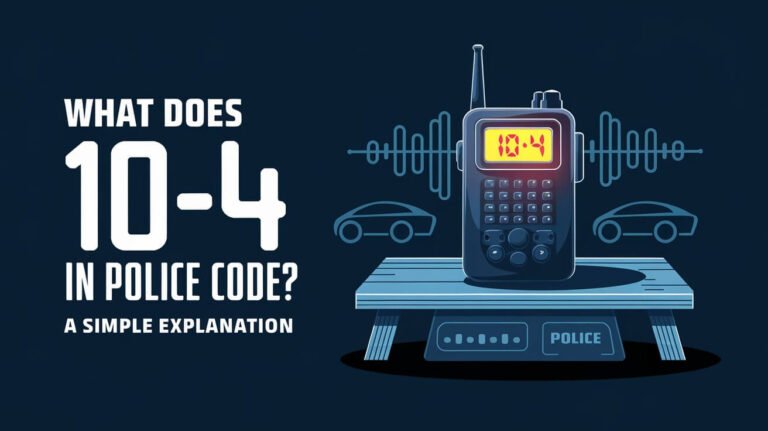Identifying Police Drones After Dark: Nighttime Detection Tips

In the darkness of night, a faint buzzing sound catches your ear. Is it just an insect, or could it be something more high-tech? Police drones are increasingly used for nighttime surveillance, and knowing how to spot them can be crucial for privacy-conscious citizens. This guide will equip you with the skills to identify these aerial observers, covering visual cues, sound recognition, tech tools, and legal considerations.
Visual Clues for Identifying Police Drones After Dark
Distinctive Lights and Patterns
Police drones often sport a unique light setup that sets them apart from other flying objects. Keep an eye out for:
- Red and green navigation lights
- White anti-collision strobes
- Bright spotlights for illuminating targets
These lights aren’t just for show. The FAA requires drones to have visible lights that can be seen for at least 3 miles and flash 40-100 times per minute. Police drones may also use customized light patterns to help officers identify specific units.
Use binoculars or a telescope to get a closer look at suspected drone lights in the distance.
Recognizing Drone Shapes in Low Light
Even in dim conditions, you can often make out the shape of a police drone:
- Look for X or H configurations typical of quadcopters
- Watch for steady hovering or precise movements
- Notice any hanging payloads like cameras or sensors
Remember, police drones are usually larger than hobby models, so they may be more visible against the night sky.
Listening for Police Drone Sounds
Characteristic Buzzing and Humming
The sound of a drone can be a dead giveaway. Police drones typically produce:
- A distinct buzzing or humming noise
- A sound that’s louder than most insects
- A consistent tone that doesn’t vary like bird or bat calls
The drone’s propellers create this noise, which becomes more noticeable at night when ambient sounds decrease.
Differentiating Drone Noise from Other Nighttime Sounds
To avoid false alarms, learn to distinguish drone sounds from other nocturnal noises:
- Drones have a more mechanical, constant sound than wildlife
- Unlike airplanes, drone noise doesn’t fade in and out as quickly
- The buzz is usually steadier than the sound of wind in trees
With practice, you’ll be able to pick out drone sounds from the nighttime symphony of nature.
Tech Tools for Detecting Police Drones
Smartphone Apps for Drone Detection
Technology can give you an edge in spotting police drones. Several apps can help:
- DroneMobile: Detects nearby drone signals
- Aerial Armor: Provides real-time alerts of drone activity
- AirMap: Shows drone traffic in your area
While these apps aren’t foolproof, they can add another layer to your drone detection arsenal.
Advanced Equipment for Nighttime Drone Spotting
For those serious about drone detection, more sophisticated tools exist:
- RF scanners to pick up drone control signals
- Acoustic sensors that can identify drone sound signatures
- Thermal cameras to spot the heat from drone motors
These devices can be pricey, but they offer more reliable detection than the naked eye or ear alone.
Common Flight Patterns of Police Drones
Hovering and Surveillance Behaviors
Police drones often exhibit specific flight behaviors:
- Extended hovering over areas of interest
- Slow, methodical movements in a grid pattern
- Circling around specific locations repeatedly
These patterns indicate the drone is likely gathering information or monitoring an area.
Typical Search and Patrol Routes
Law enforcement may use drones for various nighttime missions:
- Following predetermined patrol paths
- Expanding outward in a spiral for search operations
- Moving back and forth in parallel lines for area surveys
Familiarizing yourself with these patterns can help you anticipate where a police drone might appear next.
Legal Aspects of Police Drone Operations at Night
Regulations Governing Nighttime Drone Use
Police must follow specific rules when flying drones at night:
- They need an FAA waiver for flights after dark
- Anti-collision lights are mandatory
- Operations must comply with local and state laws
Knowing these regulations can help you determine if a drone is operating legally.
Your Rights When Encountering Police Drones
Understanding your rights is crucial:
- Police generally don’t need a warrant for drone surveillance of public areas
- You have the right to record police drones from public property
- Interfering with police drones is illegal and can lead to serious charges
If you’re concerned about drone activity, document it and consider contacting local authorities or civil liberties organizations.
Practical Tips for Improving Your Drone Spotting Skills
Training Your Eyes for Night Vision
Enhance your ability to see drones in low light:
- Allow your eyes to adjust to darkness for 20-30 minutes
- Use red light for illumination to preserve night vision
- Practice identifying objects in your yard at night
Regular practice will sharpen your nighttime observation skills.
Choosing Optimal Observation Points
Select the best locations for spotting police drones:
- Find elevated positions with clear sightlines
- Avoid areas with lots of artificial light
- Look for spots with minimal obstructions like trees or buildings
A good vantage point can dramatically improve your chances of spotting a drone.
Distinguishing Police Drones from Other Nighttime Aircraft
Comparing Drones to Planes and Helicopters
Don’t mistake other aircraft for police drones:
- Planes have steady, linear flight paths and blinking lights
- Helicopters are much louder and have a distinctive chop sound
- Drones are smaller, more agile, and can hover in place
Learning to differentiate these can prevent false alarms and unnecessary worry.
Identifying Civilian vs. Law Enforcement Drones
Not all nighttime drones belong to the police:
- Civilian drones are usually smaller and less sophisticated
- Police drones may have official markings or specialized equipment
- Law enforcement drones often fly in more structured patterns
When in doubt, observe the drone’s behavior to gauge its likely purpose.
Responding to Police Drone Sightings
Appropriate Actions to Take
If you spot a police drone, here’s what to do:
- Stay calm and avoid interfering with the drone
- Document the sighting with photos or video if possible
- Note the time, location, and drone’s behavior
Remember, the drone may be part of a legitimate police operation.
Reporting Procedures for Suspicious Drone Activity
For concerning drone activity:
- Contact local law enforcement non-emergency line
- Report to the FAA through their online system
- Inform community watch groups or neighborhood associations
Proper reporting helps authorities address any misuse of drones.
Future Trends in Police Drone Technology
Emerging Features for Nighttime Operations
Police drones are constantly evolving:
- Improved thermal and night vision capabilities
- Longer flight times and greater range
- AI-powered tracking and analysis systems
Staying informed about these advancements can help you adapt your spotting techniques.
Potential Changes in Detectability
As technology progresses, drones may become harder to detect:
- Quieter propulsion systems
- Stealth materials to reduce visibility
- Advanced signal encryption to evade detection apps
These changes may require new methods for spotting police drones in the future.
Staying Informed About Local Police Drone Use
Resources for Community Updates
Keep up with police drone activity in your area:
- Attend community policing meetings
- Follow your local police department’s social media
- Check municipal websites for drone program information
Being informed helps you understand when and why drones might be in use.
Engaging with Law Enforcement on Drone Policies
Take an active role in shaping drone use policies:
- Participate in public comment periods on drone regulations
- Contact your local representatives about your concerns
- Join or form citizen advisory committees on police technology
Your input can help ensure that police drone use balances public safety with privacy rights.
Spotting police drones at night might seem challenging, but with the right knowledge and tools, it’s entirely possible. By honing your visual and auditory skills, leveraging technology, and understanding the legal landscape, you’ll be well-equipped to identify these aerial observers. Remember, while it’s important to be aware of police drone activity, it’s equally crucial to respect the law and the role these tools play in public safety. Stay informed, stay vigilant, and keep looking up – you never know what you might spot in the night sky.






